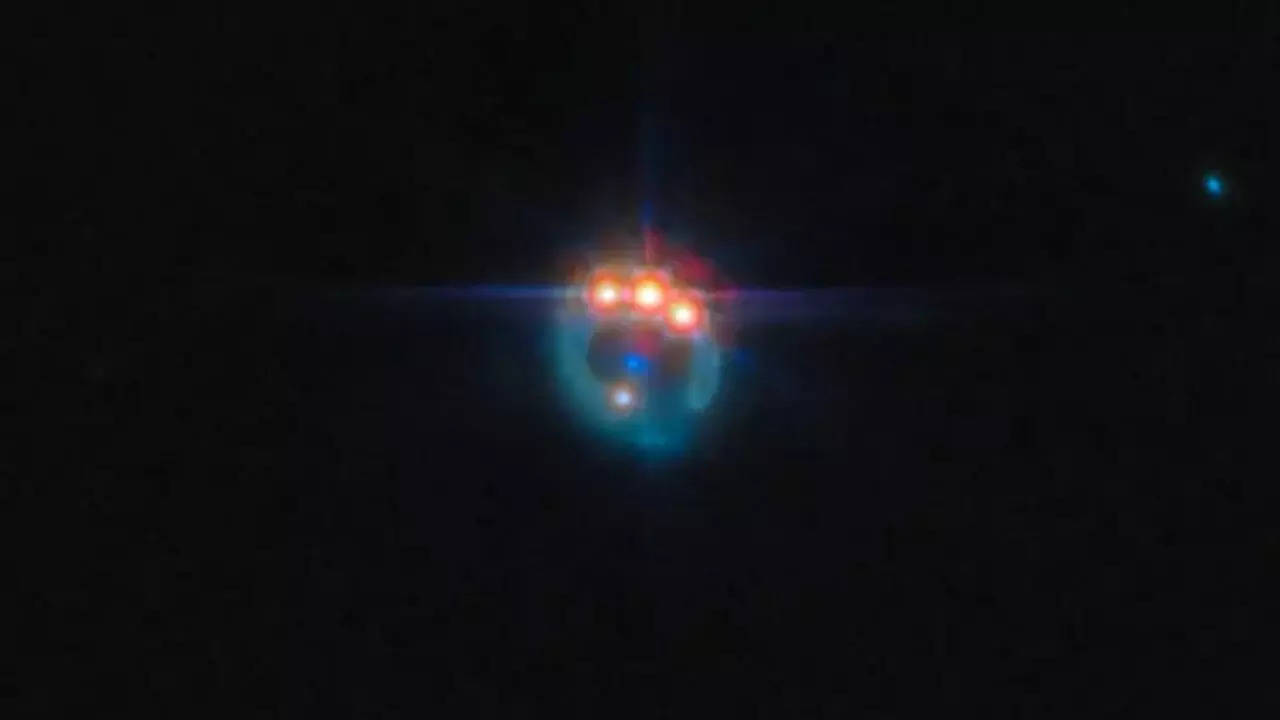Gravitational lensing happens when a massive object, like a galaxy, bends the light from a more distant source. In this case, the powerful gravitational field of an elliptical galaxy in the foreground warps the light from the quasar, creating a bright arc and multiple images of the quasar. This effect makes the quasar appear as a sparkling ring, resembling a piece of jewelry.
Quasars are incredibly bright active galactic nuclei powered by supermassive black holes. The quasar RX J1131-1231 is especially luminous due to large amounts of gas and dust falling into its central black hole. This process causes the region around the black hole to shine intensely. The gravitational lensing effect allows astronomers to study regions close to the black hole in distant quasars, providing valuable insights into the behavior and growth of these massive objects.
Representative image of a quasar
The elliptical galaxy responsible for the gravitational lensing appears as a small blue dot in the center of the ring. This galaxy acts as a natural telescope, magnifying the light from the distant quasar, which would otherwise be too faint to observe. The image captured by the JWST’s Mid-Infrared Instrument (MIRI) is part of an observation program aimed at studying dark matter, an invisible form of matter that accounts for most of the universe’s mass.
Measurements of the X-ray emission from quasars can indicate how fast the central black hole is spinning. This information provides important clues about how black holes grow over time.For instance, if a black hole forms mostly as a result of galaxy mergers and collisions, it should gather material in a stable disc and eventually spin quickly. In contrast, the black hole would gather material from all directions if it expanded through numerous minor accretion episodes.
Observations have indicated that the black hole in quasar RX J1131-1231 is spinning at over half the speed of light. This suggests that the black hole has grown via mergers, rather than pulling material in from different directions. The JWST’s observations of quasars are allowing astronomers to probe the nature of dark matter at smaller scales than ever before.
The image of the jeweled ring is not only visually stunning but also scientifically significant. It provides a unique glimpse into the distant universe and helps researchers understand the complex processes that govern the behavior of supermassive black holes and the formation of galaxies. The JWST continues to push the boundaries of our knowledge, revealing the hidden wonders of the cosmos and offering new opportunities for discovery.

Dr. Sarah Adams is a scientist and science communicator who makes complex topics accessible to all. Her articles explore breakthroughs in various scientific disciplines, from space exploration to cutting-edge research.







